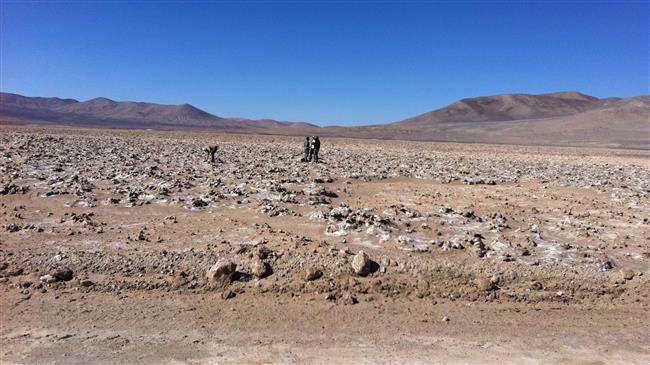Life detected in world’s driest desert, sign of potential life on Mars: Study
Apart from the wishful thinking of finding or making contact with some complex and intelligent alien life forms in other corners of the seemingly limitless cosmos, as depicted in sci-fi movies, the scientific endeavor, however, is largely one in which astrobiologists attempt to detect simple organisms in other parts of the Solar System, notably on Mars, and an indirect way to assess such possibility is to study those microorganisms that thrive in the harshest conditions on the Earth.
A team of international scientists, led by Washington State University planetary scientist Dirk Schulze-Makuch, meticulously studied South America’s Atacama Desert, the driest nonpolar desert in the world, where decades pass without any rain, and found that even this hyper-arid desert can provide a habitable environment for microbes.
The research, whose results were published in the journal Proceedings of the National Academy of Sciences on Monday, showed that specialized bacteria are capable of living in the dehydrated soil of this strip of land on the Pacific coast, going dormant for decades without receiving a single drop of water and then reactivating and reproducing when it rains.
“It has always fascinated me to go to the places where people don’t think anything could possibly survive and discover that life has somehow found a way to make it work,” Schulze-Makuch said. “Our research tell us that if life can persist in Earth’s driest environment there is a good chance it could be hanging in there on Mars in a similar fashion.”
Those organisms, which thrive in physically or geochemically extreme conditions that are detrimental to a large part of life on the Earth, are technically called extremophiles. They are suitable tools by which astrobiologists try to assess the possibility of the presence of life, at least in its simple form, on Mars, whose environment, more or less, is similar to the niches occupied by these diehard microbes.

When Schulze-Makuch and his team went to the Atacama, situated west of the Andes Mountains in Chile, for the first time in 2015 to study how microorganisms survive in the soil of the Earth’s driest environment, an extremely uncommon thing happened. It rained.
After the exceedingly rare shower, the scientists detected an explosion of biological activity in the desert’s soil. Using highly sterilized spoons and other delicate instrumentation, the researchers took soil samples from various depths and discovered a number of indigenous species of microbial life that had adapted to live in the dried out environment.
The scientists went back to the Atacama in 2016 and early 2017 to follow up on their initial sampling and discovered that the same microbial communities in the soil were steadily reverting to a dormant state as the moisture went away.

“In the past researchers have found dying organisms near the surface and remnants of DNA but this is really the first time that anyone has been able to identify a persistent form of life living in the soil of the Atacama Desert,” Schulze-Makuch said, adding, “We believe these microbial communities can lay dormant for hundreds or even thousands of years in conditions very similar to what you would find on a planet like Mars and then come back to life when it rains.”
In mid-March, Schulze-Makuch will visit the same area of the Chilean desert for two weeks to investigate how the Atacama’s microorganisms have adapted to survive.
“There are only a few places left on Earth to go looking for new life forms that survive in the kind of environments you would find on Mars,” Schulze-Makuch said.
“Our goal is to understand how they are able to do it so we will know what to look for on the Martian surface”, which is similar to a drier and much colder version of the Atacama Desert.
Hamas thanks Iran, Resistance Front following achievement of ceasefire in Gaza
'Capitulation': Israeli officials and media concede Gaza defeat as truce unfolds
'Gaza has won': Social media users react to ceasefire with mix of relief, joy
Iran seeks South Korea’s assistance for AI, fiber-optic projects
VIDEO | Iran's 'Eqtedar' (Power) maneuver
Israel hits HTS military target in Syria for 1st time since fall of Assad
VIDEO | Press TV's news headlines
Israel has slaughtered 13,000 students in Gaza, West Bank













 This makes it easy to access the Press TV website
This makes it easy to access the Press TV website